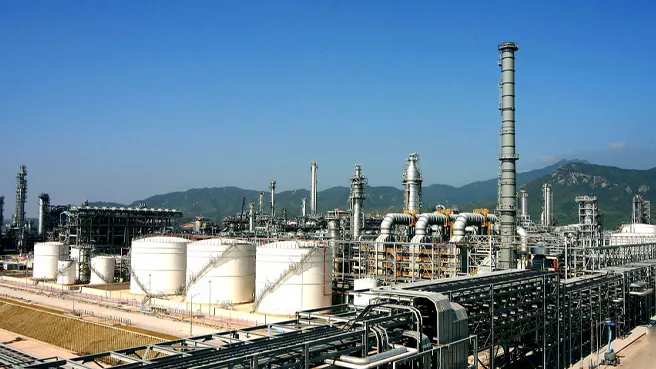
poly butadiene rubber
Polybutadiene Rubber A Comprehensive Overview
Polybutadiene rubber (BR) is a synthetic rubber that plays a pivotal role in various industries, primarily in the manufacture of tires and other rubber products. Its unique properties, including high resilience, low hysteresis loss, and excellent wear resistance, make it a favorite material for applications requiring durability and flexibility.
Brief History and Production Process
The development of polybutadiene rubber began in the 1930s, with its first commercial production occurring during World War II when natural rubber supplies were scarce. Scientists sought to create a synthetic alternative, and thus, polybutadiene was synthesized from the polymerization of butadiene, a byproduct of petroleum refining. The polymerization process can be carried out through various methods, including anionic and emulsion polymerization.
In anionic polymerization, butadiene is reacted with initiators at low temperatures, usually in the presence of organic solvents. This process allows for the production of high-purity polybutadiene with controlled molecular weights. Emulsion polymerization, on the other hand, involves dispersing butadiene in water with surfactants, leading to the formation of latex, which can be further processed into solid rubber.
Properties and Characteristics
Polybutadiene rubber possesses distinct physical and mechanical properties that contribute to its widespread use. One of its most significant characteristics is its exceptional resilience and tensile strength, allowing it to withstand stress and deformation. Additionally, polybutadiene exhibits low rolling resistance, making it particularly valuable in tire manufacturing, as it enhances fuel efficiency for vehicles.
Moreover, polybutadiene has excellent abrasion resistance, which translates to a longer lifespan for products made from this rubber. Its low glass transition temperature (-60 °C) lends it flexibility even in extremely cold conditions, ensuring that products maintain performance across a range of temperatures.
However, like all materials, polybutadiene has its limitations. It is susceptible to degradation from ultraviolet (UV) light and ozone exposure, necessitating the incorporation of stabilizers or additives to enhance its weather resistance.
poly butadiene rubber

Applications
The primary application of polybutadiene rubber is in the tire industry. Approximately 70% of the world’s polybutadiene production is directed towards tire manufacturing. Tires made from polybutadiene provide superior performance in terms of traction and wear resistance, addressing the rigorous demands of road conditions and driving styles.
Beyond tires, polybutadiene is utilized in various other applications such as automotive parts, conveyor belts, adhesives, and sealants. It is also blended with other types of rubber, such as styrene-butadiene rubber (SBR), to enhance certain properties and create versatile materials suited for specific uses.
Environmental Considerations
As the world increasingly focuses on sustainability, the production and use of synthetic materials, including polybutadiene, are under scrutiny. The environmental impact associated with petrochemical-derived materials cannot be overlooked. Consequently, research is ongoing to develop bio-based alternatives to traditional polybutadiene production. Initiatives aim to utilize renewable resources and reduce the carbon footprint associated with rubber manufacturing.
Innovations in recycling technologies are also being pursued to maximize the sustainability of rubber products after their useful life. With the right advancements, polybutadiene and other synthetic rubbers may not only meet the performance standards required by industries but also align with global sustainability goals.
Conclusion
Polybutadiene rubber is a versatile and essential material in the modern industrial landscape, particularly in the automotive sector. Its unique properties make it an indispensable component in tire manufacturing and numerous other applications. As industries evolve and prioritize sustainability, the future of polybutadiene will depend on innovations that enhance its environmental profile while maintaining the performance characteristics that make it so widely used today. As researchers and manufacturers continue to explore new methods of production and recycling, polybutadiene rubber is likely to remain a cornerstone of synthetic materials for years to come.
-
Pure Sodium Dichloroisocyanurate Dihydrate | Powerful DisinfectantNewsAug.29,2025
-
Industrial Chemicals: Quality & Purity for Every IndustryNewsAug.28,2025
-
Nitrile Rubber Honoring Strict Production StandardsNewsAug.22,2025
-
Aspartame Ingredients Honoring Food Safety ValuesNewsAug.22,2025
-
Fertilizer for Balanced Plant NutritionNewsAug.22,2025
-
Cyanide Gold Processing with High Purity AdditivesNewsAug.22,2025
-
Formic Acid in Textile Dyeing ApplicationsNewsAug.22,2025
Hebei Tenger Chemical Technology Co., Ltd. focuses on the chemical industry and is committed to the export service of chemical raw materials.
-

view more DiethanolisopropanolamineIn the ever-growing field of chemical solutions, diethanolisopropanolamine (DEIPA) stands out as a versatile and important compound. Due to its unique chemical structure and properties, DEIPA is of interest to various industries including construction, personal care, and agriculture. -

view more TriisopropanolamineTriisopropanolamine (TIPA) alkanol amine substance, is a kind of alcohol amine compound with amino and alcohol hydroxyl, and because of its molecules contains both amino and hydroxyl. -

view more Tetramethyl Thiuram DisulfideTetramethyl thiuram disulfide, also known as TMTD, is a white to light-yellow powder with a distinct sulfur-like odor. It is soluble in organic solvents such as benzene, acetone, and ethyl acetate, making it highly versatile for use in different formulations. TMTD is known for its excellent vulcanization acceleration properties, which makes it a key ingredient in the production of rubber products. Additionally, it acts as an effective fungicide and bactericide, making it valuable in agricultural applications. Its high purity and stability ensure consistent performance, making it a preferred choice for manufacturers across various industries.





